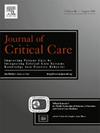分享即关怀:对公开可用的重症监护数据集的系统回顾
IF 2.9
3区 医学
Q2 CRITICAL CARE MEDICINE
引用次数: 0
摘要
多个重症监护病房(ICU)数据库已经公开发布,以推进数据驱动的重症监护医学。然而,这些公共ICU数据集容易发生变化、更新和新发布。因此,本综述的目的是为临床医生和数据科学家提供最先进的概述和指导,为他们各自的研究问题选择相关的ICU数据集。方法系统检索PubMed、PhysioNet、Arxiv、MedRxiv和BioRxiv,确定所有公开的成人重症监护数据集。在提取数据库特征数据后,对结果进行定性综合。结果共收录出版物882篇。筛选后,纳入7个公开的ICU数据库进行分析:阿姆斯特丹umcdb、eICU合作研究数据库(eICU- crd)、高时间分辨率ICU数据集(HiRID)、重症监护医学信息集市(MIMIC)-IV、西北ICU (NWICU)、萨尔茨堡重症监护数据库(SICdb)和自公市第四人民医院感染患者数据库。定性综合显示患者数量、器官支持使用、入院类型和测量频率存在显著差异。结论由于医疗实践、信息技术和法律限制方式的差异,每个公共ICU数据集存在差异。本系统综述为临床医生和数据科学家提供了可用的公共ICU数据集及其特征的概述。本文章由计算机程序翻译,如有差异,请以英文原文为准。
Sharing is caring: A systematic review of publicly available intensive care data sets
Introduction
Multiple Intensive Care Unit (ICU) databases have been publicly released to advance data driven intensive care medicine. However, these public ICU data sets are prone to changes, updates and new releases. Therefore, the goal of this review is to provide clinicians and data scientists with a state-of-the-art overview and guide for choosing the relevant ICU data sets for their respective research questions.
Methods
A systematic search was carried out in PubMed, PhysioNet, Arxiv, MedRxiv and BioRxiv to identify all publicly available intensive care data sets of adult patients. After data extraction of database characteristics, a qualitative synthesis of results was carried out.
Results
882 publications were identified. After screening, 7 publicly available ICU databases were included for analysis: AmsterdamUMCdb, eICU Collaborative Research Database (eICU-CRD), High Time Resolution ICU Dataset (HiRID), Medical Information Mart for Intensive Care (MIMIC)-IV, Northwestern ICU (NWICU), Salzburg Intensive Care database (SICdb) and Zigong Fourth People's Hospital (ZFPH) database of patients with infections. A qualitative synthesis showed notable differences in number of patients, usage of organ support, admission types and frequency of measurements.
Conclusion
Each public ICU data set differs due to differences in medical practice, information technologies and approach to legal restrictions. This systematic review provides clinicians and data scientists with an overview of available public ICU data sets and their characteristics.
求助全文
通过发布文献求助,成功后即可免费获取论文全文。
去求助
来源期刊

Journal of critical care
医学-危重病医学
CiteScore
8.60
自引率
2.70%
发文量
237
审稿时长
23 days
期刊介绍:
The Journal of Critical Care, the official publication of the World Federation of Societies of Intensive and Critical Care Medicine (WFSICCM), is a leading international, peer-reviewed journal providing original research, review articles, tutorials, and invited articles for physicians and allied health professionals involved in treating the critically ill. The Journal aims to improve patient care by furthering understanding of health systems research and its integration into clinical practice.
The Journal will include articles which discuss:
All aspects of health services research in critical care
System based practice in anesthesiology, perioperative and critical care medicine
The interface between anesthesiology, critical care medicine and pain
Integrating intraoperative management in preparation for postoperative critical care management and recovery
Optimizing patient management, i.e., exploring the interface between evidence-based principles or clinical insight into management and care of complex patients
The team approach in the OR and ICU
System-based research
Medical ethics
Technology in medicine
Seminars discussing current, state of the art, and sometimes controversial topics in anesthesiology, critical care medicine, and professional education
Residency Education.
 求助内容:
求助内容: 应助结果提醒方式:
应助结果提醒方式:


